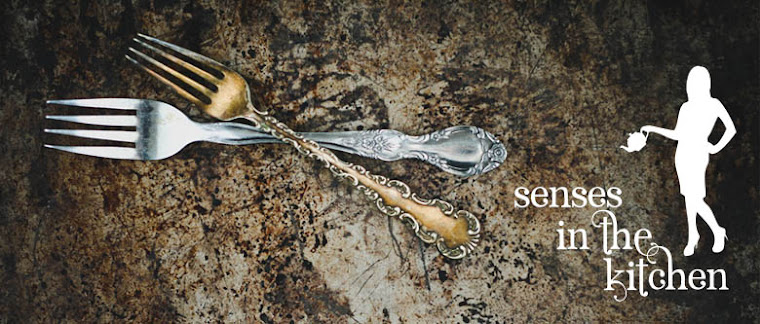

This is so Polish! It is rustic, it is traditional and making your own sour starter is actually a fun. Traditionally I make rye sour starter, but I have tried this one and I feel like this is more delicate, the flavour is not too strong. Perhaps it is better for somebody who wants to start an adventure with Polish cusine.
For sour starter6-7 tbsp oats
2 cloves of garlic, peeled and slightly crushed
bay leaf
2-3 whole allspice
2-3 whole black peppercorns
approx. 800ml warm water
clean jar or bottle
Put oats in a food processor or mini chopper and process until you have a coarse flour. You can use a pestle and mortar if you do not have a food processor.
Mix oat flour with water, until smooth - make sure you do not have any lumps. Add garlic, bay leaf, allspice, pepper and mix well. Pour into a jar or bottle, cover with clean cloth and place in warm place. The best temperature for fermentation process is around 22 C.
Make sure you shake or stir you starter every day. Fermantation should take around 5 days. Starter is ready when it smells sour, bit yeasty, perhaps little bit like sour apple.
There are two ways of using sour starter. Some people, i.e. me use the whole lot together with flour - the soup is more thick and floury. Some use the sour water only, making sure, that all flour remains on the bottom of the jar. To do it, do not shake the starter for last 12 hours - all flour should be on the bottom of the jar by the time you have to use the starter.
Sour oats soup (vegetarian, vegan and sausage version)makes 6
whole sour starter
handfull of dried porcini mushrooms
piece of good quality Polish sausage (such as śląska) - skip for veggie version
3-4 potatoes, peleed and cubed
onion, peleed and diced
1 tbsp sunflower oil
800ml vegetable stock
2 tbsp marjoram (optional)
salt
freshly ground black pepper
In a big pan boil whole sausage and porcini mushrooms in the stock. For veggie version skip the sausage. After about 15 minutes remove the sausage and add potatoes. Simmer until soft. Make sure the potatoes are properly cooked before adding the sour sarter, bacause potatoes will not cook in the sour environment.
Meanwhile slice the sausage and fry the onion in sunflower oil until soft and lightly browned. Add the sour starter to the pan. For a thick soup add the whole lot, if you prefer more watery soups add just the sour water form a starter.
Stir, add sausage, marjoram, and season with salt and pepper. Let it simmer for few more minutes.
You can serve vegetarian version with quartered hard boiled egg, but you can also add the egg to sausage version. For vegan soup skip the egg and the sausage. You can also add some horseradish to the bowl when serving this soup.



























